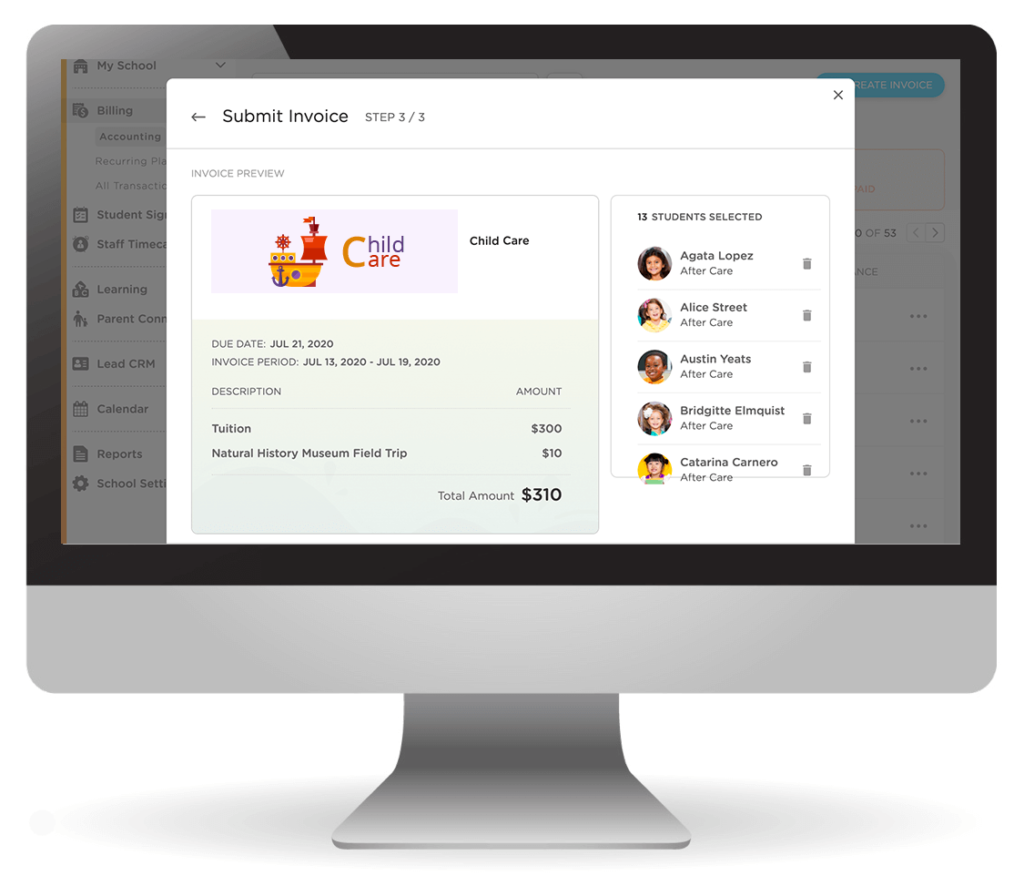
If you’re planning to offer child care services in your community, figuring out how much to charge is an important early step toward setting up your business.
If you charge too little, you may find that your income doesn’t cover your child care expenses and you’re actually losing money. Parents may be disappointed later on when you ask to raise the price. If you charge too much, you may have trouble competing for customers with other child care providers in your area.
In this blog post, we’ve put together our best tips and advice on how much to charge for child care. You’ll learn about the various factors that affect the cost of child care and we’ll outline a simple five-step process that can help you figure out how much to charge.
What Factors Affect the Cost of Child Care?

The first thing you should understand about charging for child care is that there’s no “standard rate” for child care services. How much you can charge depends on the type of business you operate, where you are physically located, and a number of additional factors. Below, we highlight the five most important factors impacting the cost of child care.
Geographical Location
Across the United States, the average cost for child care services is around $9,600 per year or $800 per month – but those rates aren’t the same everywhere. In fact, the cost of child care varies widely from state to state.
In Massachusetts, one of the most expensive child care states, the average annual cost of infant care in a center-based facility is $20,913.
In Alabama, one of the least expensive child care states, the same year of infant care costs $6,001.
In general, states with higher property values and a greater median family income also have more expensive child care. The cost of doing business in these states may also be greater, so higher child care prices doesn’t necessarily translate into more profits for your center. Ultimately, you’ll need to adjust your pricing to be competitive in the markets where you operate.
Child Care Business Model
Another factor that impacts how much you can charge for child care is your business model.
If you’re offering part-time or occasional babysitting services to friends and family, you’ll most likely be charging an hourly rate. If you’re offering live-in child care services as a nanny or an au-pair, your charges might include a daily rate, plus room and board. If you’re operating an in-home daycare, you’ll probably charge by the week, but parents will expect you to cost less than center-based care. Center-based care facilities are the most expensive type of child care business to operate and usually charge the highest weekly or monthly tuition fees to parents.
Center-based care facilities have the highest costs because they typically provide more services to parents than other types of child care operations. Parents associate a number of perceived benefits with center-based care, including:
- More structured learning environment
- Greater variety of lessons and activities
- More qualified child care providers
- More kids to play and interact with, helping develop socialization, conflict resolution and other relationship-based skills
- Greater variety of books, toys and games
Child Care Worker Skills and Experience
In a 2017 survey, 41% of parents said that they would be willing to pay more money to hire a child care provider with an early education degree and 66% of parents said that they would pay more for a babysitter with certified safety training.
Based on these results, it’s clear that child care providers with more qualifications should be charging more for their services. When you’re discussing child care rates directly with parents, you’ve got to know your worth. Be sure to mention your qualifications, certifications and educational background so they can see the value you bring to the table.
Specialized Programming
Child care operations that offer specialized education or physical activity programs may charge greater tuition fees than those with more conventional programming.
Age(s) of Children
How much you should charge for child care also depends on the ages of the children.
While school-age kids might be able to play independently with light supervision, infants are completely dependent and rely on child care providers to keep them safe and provide for their every need.
This difference explains why staff-to-child ratios are highest for infants – they simply demand more attention, and as a result, child care for infants usually costs more.
How much more? Let’s go back to Massachusetts and Alabama.
In Massachusetts, monthly child care for an infant costs $1,743 while care for a school-aged kid costs $1,258.
In Alabama, monthly child care for an infant costs $500, while care for a four-year-old would cost an average of $432.
How Much Should You Charge for Child Care?

So with all that said, how much should you actually charge for child care services? We’ve outlined a quick five-step process you can follow to figure it out for yourself
1. Understand your child care business model.
Start by understanding your child care business model.
Are you providing center-based care, home-based daycare, after school programming, live-in child care services, or an on-call babysitting service? Will you be providing child care services on a regular basis or just occasionally?
If you’re providing an occasional service, it’s probably best to charge by the hour and get paid each time you work. If you’re providing a regular child care service, you may want to charge by the day, week or month
2. Know the going rates for child care in your area.
Once you’ve figured out how you plan to provide child care services, you’ll want to research the going rates for child care services in your area.
We’ve published a detailed report on child care costs by state, where you can quickly find out the average monthly cost for center-based child care services in your state. You may also want to check out the most recent Cost of Care Survey, where you’ll find national average rates for other types of child care, including nannies, after school programs and family-based care.
3. Factor in your skills, knowledge and credentials.
By now, you should have a pretty good idea of how much families in your area are willing to pay for the kind of child care services that you provide.
If you’re intent on getting paid more than that amount, you’ll need to make a case that’s based on your skills, knowledge and credentials as a child care provider. We’ve already mentioned that parents are willing to pay more if you’ve got safety training or an ECE diploma – but it doesn’t stop there.
Do you speak a second language that you can teach? Do you play a musical instrument? Are you an expert at a sport or a popular game?
If there’s something unique and different that you can provide in addition to child care services, parents may be willing to pay more money for you to spend time with their child.
4. Cover your costs, including expenses, taxes and compliance.
No matter what type of child care service you provide, you won’t make money if you don’t charge enough to cover your costs.
And there are always costs.
If you’re a center-based care facility, you’ll have many different costs to cover – from your commercial lease to staffing costs to the meals you provide each day. Even if you’re providing occasional in-home babysitter services, you’ll have some sort of transportation cost as you travel to and from your customer’s house.
As you’re determining how much to charge for child care, make a list of all the costs associated with your business, such as staffing, material costs, utilities and other operating costs*. Then, factor in how much profit you hope to make and divide by the number of slots you plan to offer.
*Child care management software can make this a lot easier because it tracks all of your expenses and can show you how much you’re spending each month in a matter of moments.
5. Plan for the long term.
The final thing you should account for when determining how much to charge for child care is your long-term goals.
If you’re trying to build and scale a center-based child care operation, an effective strategy might be to develop amazing programming, build strong relationships with parents and charge a premium so you can keep investing back into your business. If you’re providing occasional babysitting for older kids as a part-time gig, a modest hourly rate should work just fine for both parties.
Simplify Child Care Billing with Procare Solutions

However much you charge for your child care services, you’ll need to figure out the most efficient way to invoice your customers and get paid.
Procare’s child care billing software makes this easier than ever, with features that include:
- Attendance-based billing
- Online tuition payments
- Automated credit/debit payments
- Detailed online reports
- Next business day funding
- Automated payment posting and receipts
Procare streamlines the child care billing process, making it more convenient – and touch-free – for both parents and child care providers. With Procare, you’ll get paid faster by parents and spend less time manually preparing invoices and tracking payments.
Ready to find out why over 30,000 child care businesses bill their customers using Procare Solutions?
Request a Demo
Request a demo and talk with one of our friendly Procare experts to get a tailored child care solution for the unique needs of your business.



